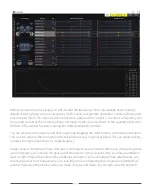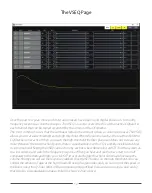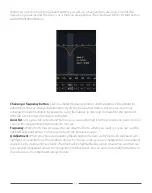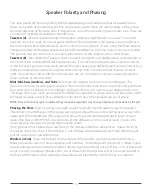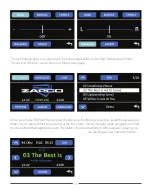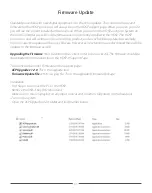
43
Special Features of the HDSP-Z16V Processor
The unique I/O page of the HDSP-Z16V processor allows some useful special effects to happen.
A little about how it all works:
a. You can assign any combination of inputs to any processing channel by adding or subtracting inputs
(you subtract but adding an input with its phase reversed).
b. As mentioned earlier, even though there are nominally only 8 input channels, the actual processor is
using 12 channels of input in three groups. There can be 2~8 channels in Gp1, 2 channels only plus the
on-board HD player in Gp2, and 2 Channels in Gp3, which is the Loop function. The Loop inputs are
not taken from an outside source but are taken from the output of the other 2 groups.
With this information you can create realistic ambience, create a realistic center channel, and you can
even create a pair of 60-band EQ channels.
Ambient Rear Fill
For years the problem with rear fill has been that it destroys the front stage. This is because the front
and rear have exactly the same information. When the rear is loud enough for you to hear it, the front
stage is no longer out in front and your head is being drawn to the rear.
At a concert the center stage information comes straight to you, but the information at the sides of the
stage has more reflected information and a later arrival time, especially if it is arriving after reflecting off
the back walls. The channel then is to remove the outside information from the rear channels and to
add the delay needed to simulate the desired hall size. Two things here help you do just that very
effectively as in the next page screen.



